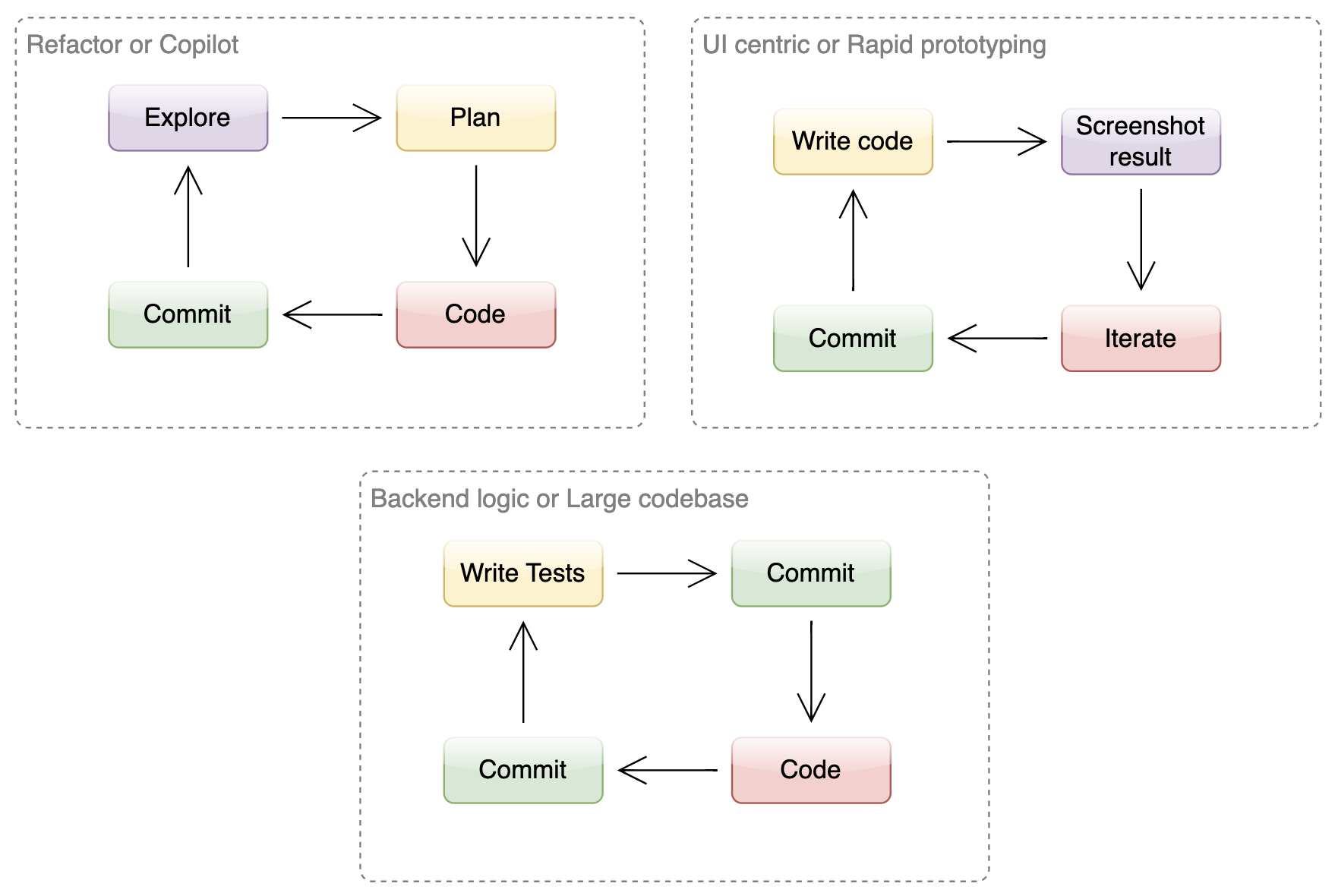
AI Automation Best Practices: Essential Workflows for Enterprise Development
Scroll to explore
Teams can prompt their way to generate simple apps using Claude Code. However, there are rails required to achieve production quality results and deliver reasonably complex apps. These rails are not any different from those required for hand-coded apps. The rails themselves can be AI augmented.
Before stepping into the Rails of AI Automation, we want to read and internalize the best practices of AI-powered coding shared by Anthropic, Y Combinator, and other experts. These practices are derived from industry best practices and extensive experience developing with AI across multiple projects.
The Three Essential AI Development Workflows
Practitioners should master these best practice workflows as recommended by Anthropic’s Claude Code best practices. These workflows have proven effective across various project types and complexity levels.

1. Explore, Plan, Code, Commit Workflow
When to use: Starting with existing code or pair programming with AI
This versatile workflow suits many problems and emphasizes thorough exploration before implementation:
- Explore without writing code to learn about existing codebase, verify details, study documentation, or analyze requirements
- Plan using extended thinking (increase thinking budget with prompts like “think” < “think hard” < “think harder” < “ultrathink”)
- Code implementing the plan systematically
- Commit changes with clear, descriptive messages
Key Benefits:
- Reduces technical debt through upfront exploration
- Leverages AI’s analytical capabilities before code generation
- Creates maintainable solutions through proper planning
- Enables effective use of subagents for complex tasks
2. Write Tests, Commit; Code, Iterate, Commit Workflow
When to use: Large codebases or significant backend logic changes
This Anthropic-favorite workflow emphasizes test-driven development:
- Write comprehensive tests based on expected input/output pairs
- Run tests and confirm they fail (red phase)
- Commit the tests to establish clear requirements
- Write code that passes the tests (green phase)
- Iterate and refactor while maintaining test coverage
- Commit the implementation once tests pass
Key Benefits:
- Ensures code correctness through automated verification
- Provides regression protection for complex systems
- Creates living documentation through test specifications
- Enables confident refactoring and optimization
3. Rapid Prototyping Workflow
When to use: User interface-centric apps or rapid prototyping
This workflow prioritizes speed and iteration for user-facing features:
- Generate UI mockups and basic functionality quickly
- Test with real users or stakeholders early
- Iterate based on feedback rapidly
- Gradually increase code quality as requirements stabilize
Implementation Guidelines
Configuration Best Practices
Establish consistent development environments across your team:
# Example configuration setup
export AI_MODEL_PREFERENCE="claude-3-5-sonnet"
export THINKING_BUDGET="extended"
export TEST_COVERAGE_THRESHOLD="80"Planning and Testing Framework Integration
Integrate AI workflows with your existing development tools:
- CI/CD Integration: Automate test running and deployment
- Code Review: Leverage AI for initial code review before human review
- Documentation: Generate and maintain documentation automatically
- Monitoring: Track AI-generated code performance and quality metrics
Measuring Success
Track these key metrics to ensure your AI automation workflows are effective:
- Code Quality: Maintain high test coverage and low bug rates
- Development Velocity: Measure feature delivery speed
- Technical Debt: Monitor and address accumulating technical debt
- Team Satisfaction: Regular feedback on workflow effectiveness
Next Steps
These foundational workflows serve as the basis for more advanced AI automation strategies. Consider exploring:
- Enterprise AI Development Workflows for scaling these practices
- Lean AI Stack Selection for choosing the right technology foundation
- AI-Powered Document Workflows for knowledge management integration
By mastering these essential workflows, teams can achieve production-quality results while maintaining development velocity and code quality. The key is consistent application and continuous refinement based on project-specific needs and team feedback.
